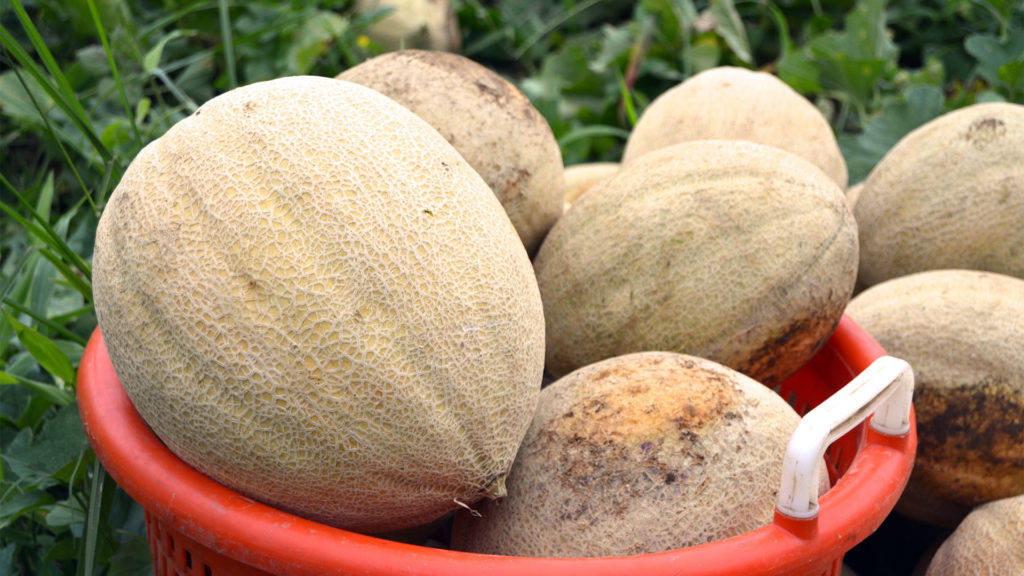When I was a kid, I memorized several poems by Ogden Nash. I enjoyed his offbeat sense of humor, and the fact that his poetry rhymed. One poem I remember goes like this: “One cantaloupe is ripe and lush. Another’s green, another’s mush. I’d buy a lot more cantaloupe, If I possessed a horoscope.”
Cantaloupes are the most common of the family of fruits known as muskmelons. Muskmelons are a promiscuous lot, and readily interbreed. The result is a wide variety of melons, each slightly different. In addition to cantaloupe, common varieties include Galia, Ambrosia, Crenshaw, Honeydew, Canadew, and Casaba.
Melons are a perfect food for summertime. Juicy and sweet, they are over 90% water. Orange fleshed melons are high in beta carotene, and all melons are good sources of potassium. One melon, the honeydew, is purported to take more calories to digest than it provides, make it an excellent choice for dieters.
Choosing the perfect melon can be a challenge, but it doesn’t have to be a mystical process. Here are a few practical tips that will increase your odds of success. First and foremost, only buy melons when they are in season, between June and September. Fruit that is grown out of season generally has to travel farther, which means that it is picked while still immature. Since a melon’s sugar content does not increase after picking, fruit that is picked green will never get as sweet as you would like it.
Second, utilize all your senses. Perhaps most important is your sense of smell. A ripe melon will give off a pleasant melon aroma. The only exception is the casaba melon, which has no perceptible aroma until it is cut. Use your sense of touch. The best melons will feel heavy for their size, and you can sometimes feel the seeds moving around inside when you shake them. A ripe melon will yield a bit to gentle pressure applied to the blossom end. In terms of appearance, look for a slightly flattened side that is a little paler than the rest of the fruit.
Finally, I have to say that I am partial to organically grown melons. While you can find perfectly acceptable commercial melons in the store, you will rarely find a memorable one. The best melons I have ever eaten have either been organic, or purchased at roadside stands where they were freshly picked from nearby fields.
In terms of serving suggestions, there is an old saying about melons: “Eat them alone or leave them alone.” Melons are digested best when eaten alone, or with other easily digested foods like other fruits or berries. Otherwise, they have a tendency to ferment in your digestive tract. Here is a recipe for a simple fruit salad featuring melons:
Melon Salad with Lime and Mint
1/2 pound melon (whatever melon is available)
Juice of 1 lime
2 Tablespoons white sugar or maple syrup
Salt
15-18 mint leaves, sliced into narrow strips (about 1/4 cup)Cut the melon open and remove the seeds. If using watermelon, remove the seeds while you work with it. Use a melon “baller” to make melon balls, or cut off the rind, and cut the melon into chunks. Combine the lime juice and sugar or maple syrup, and toss it with the melon, along with a couple of pinches of salt. Garnish with the mint leaves. Simplified version: slice the melon and serve it with wedges of lime. (Serves 4-6 people)
(from Tomato Blessings and Radish Teachings – by Edward Espe Brown)


